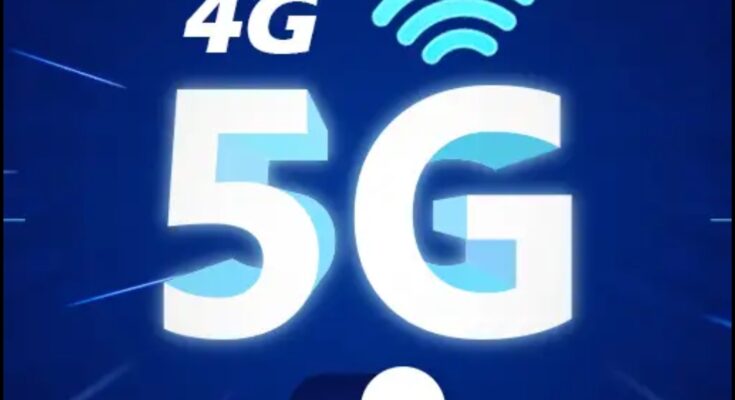The Transition from 4G to 5G: A New Era for Mobile Applications
The world of mobile technology is evolving rapidly, and the shift from 4G to 5G is a transformative step that is redefining the way applications function. With the promise of higher speeds, lower latency, and improved connectivity, 5G is unlocking new possibilities for mobile apps across various industries. From gaming and streaming to healthcare and smart cities, this transition is creating an ecosystem where applications can be more interactive, immersive, and intelligent.
Understanding 4G and Its Limitations
Before diving into the benefits of 5G, it is essential to understand how 4G has shaped the current mobile landscape. Introduced in the late 2000s, 4G revolutionized mobile communication by enabling faster internet speeds, better video streaming, and smoother gaming experiences. It also allowed the rise of app-based services such as ride-hailing, food delivery, and social media, which heavily depend on seamless connectivity.
Despite its advantages, 4G has limitations:
1. Latency Issues – The average latency in 4G networks is around 30-50 milliseconds, which may not be suitable for real-time applications like augmented reality (AR), virtual reality (VR), or remote surgeries.
2. Bandwidth Constraints – As more users and devices connect to the internet, 4G networks experience congestion, leading to slower speeds.
3. Energy Consumption – 4G consumes a significant amount of power, making it less efficient for IoT (Internet of Things) devices that require long battery life.
These limitations have paved the way for 5G technology, which promises to overcome these challenges and enable a new generation of mobile applications.
The Arrival of 5G: A Game-Changer for Mobile Applications
5G technology is designed to provide significantly faster speeds (up to 100 times faster than 4G), ultra-low latency (as low as 1 millisecond), and greater connectivity for a massive number of devices. These advancements make it ideal for various applications that demand real-time data processing, higher bandwidth, and improved reliability.
Key Features of 5G
1. Faster Speeds – 5G can offer speeds up to 10 Gbps, allowing for instant downloads and lag-free streaming.
2. Ultra-Low Latency – Latency is reduced to 1 millisecond, making real-time interactions smoother.
3. Massive Device Connectivity – 5G supports up to 1 million devices per square kilometer, enabling a vast IoT ecosystem.
4. Improved Network Efficiency – More efficient spectrum usage and energy-saving capabilities enhance battery life and sustainability.
Impact of 5G on Mobile Applications
With these enhancements, mobile applications are evolving in various ways. Here’s how 5G is transforming different types of apps:
1. Enhanced Streaming and Entertainment
5G enables seamless 4K and even 8K video streaming with minimal buffering. Apps like Netflix, YouTube, and Twitch can deliver ultra-high-definition content without interruptions. Additionally, cloud gaming platforms such as Google Stadia and Xbox Cloud Gaming benefit from 5G by providing lag-free gaming experiences without the need for expensive hardware.
2. Revolutionizing Augmented and Virtual Reality (AR/VR)
AR and VR applications require low latency and high bandwidth to function smoothly. With 5G, apps like Pokémon GO, Oculus VR, and Microsoft HoloLens can deliver more immersive experiences. Industries like retail, real estate, and education are also leveraging AR/VR for virtual shopping, property tours, and remote learning.
3. Smart Cities and IoT Applications
The ability of 5G to connect millions of devices seamlessly makes it the backbone of smart cities. Applications related to traffic management, smart lighting, and connected vehicles can function more efficiently. Smart home apps, such as Google Home and Amazon Alexa, will also benefit from faster connectivity, enabling real-time responses for home automation.
4. Remote Work and Collaboration Apps
With the rise of remote work, applications like Zoom, Microsoft Teams, and Slack are becoming essential. 5G enhances video conferencing quality, reduces lag, and ensures a stable connection even in crowded areas. This makes virtual meetings and remote collaboration more effective.
5. Healthcare and Telemedicine
5G is revolutionizing healthcare by enabling real-time remote consultations, robotic surgeries, and AI-powered diagnostics. Telemedicine apps like Teladoc and Amwell will offer improved video consultations, while remote monitoring of patients using wearables will become more accurate and efficient.
6. Autonomous Vehicles and Transportation
Self-driving cars rely on real-time data exchange for navigation and safety. 5G ensures that vehicle-to-vehicle (V2V) and vehicle-to-infrastructure (V2I) communications happen with minimal latency, enhancing road safety and traffic management. Ride-hailing apps like Uber and Lyft will also benefit from faster GPS tracking and improved ride-matching algorithms.
7. Gaming and eSports
Online multiplayer gaming demands low latency to provide a fair and competitive experience. 5G enhances real-time gameplay for titles like Call of Duty: Mobile, PUBG, and Fortnite. Cloud gaming services, where games are streamed rather than downloaded, are also set to flourish.
Challenges in Transitioning from 4G to 5G
While 5G brings numerous benefits, the transition is not without challenges:
1. Infrastructure Development – Setting up 5G networks requires significant investment in infrastructure, including new cell towers and fiber optic networks.
2. Device Compatibility – Not all smartphones and devices support 5G, requiring users to upgrade to newer models.
3. Security Concerns – With more connected devices, cybersecurity risks increase, necessitating robust security measures.
4. Data Costs – While 5G promises better performance, the cost of data plans might be higher initially, making adoption slower.
The Future of 5G and Mobile Applications
As 5G continues to expand globally, it will unlock new possibilities in mobile applications, enabling futuristic technologies like AI-powered assistants, real-time language translation, and interactive holographic communications. Developers will have more freedom to create innovative applications that were previously limited by network constraints.
What to Expect in the Next Five Years
1. Wider 5G Adoption – More countries and cities will deploy 5G networks, making it accessible to a larger population.
2. AI Integration – AI-powered apps will leverage 5G’s speed to provide real-time decision-making capabilities.
3. Advanced Wearable Tech – Smartwatches, glasses, and even clothing embedded with sensors will become more intelligent with 5G connectivity.
4. Holographic Communication – Real-time hologram meetings and interactive 3D experiences will become possible.
Conclusion
The transition from 4G to 5G is more than just a speed upgrade; it is a revolution that is transforming the way mobile applications function. With its high-speed connectivity, ultra-low latency, and ability to support massive device connectivity, 5G is paving the way for innovative apps across multiple industries. From immersive AR/VR experiences to real-time healthcare solutions and autonomous vehicles, 5G is setting the stage for a smarter, more connected world.
As 5G technology continues to evolve, mobile applications will become more powerful, efficient, and intelligent, ultimately enhancing our digital experience in ways we have only begun to imagine.



